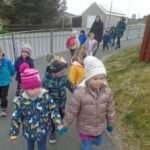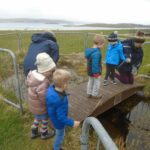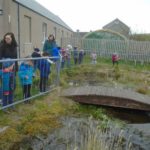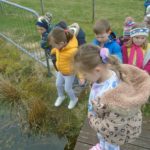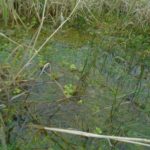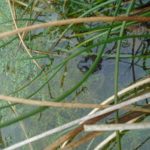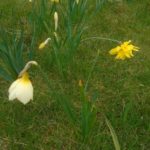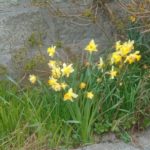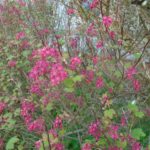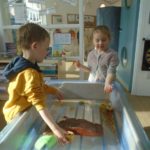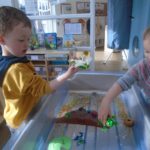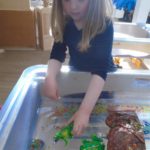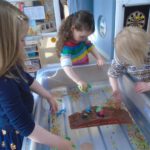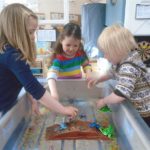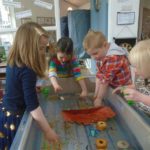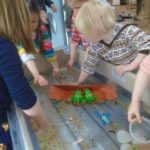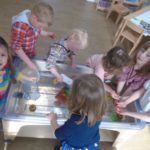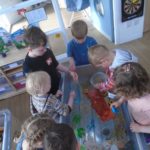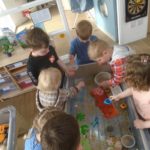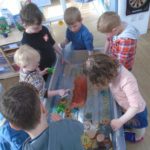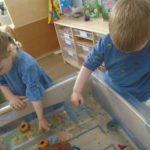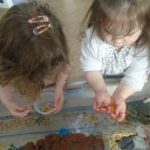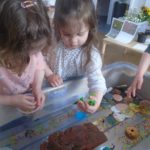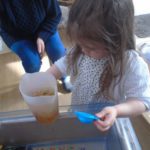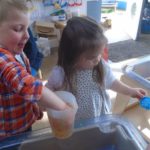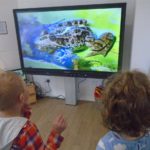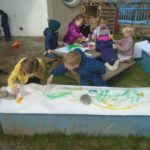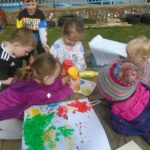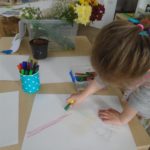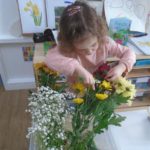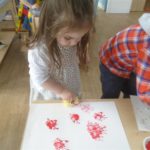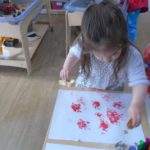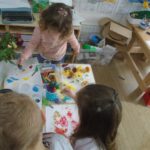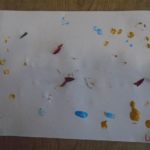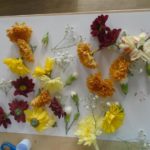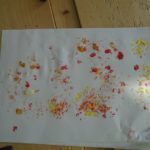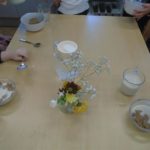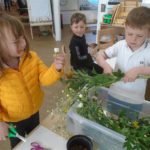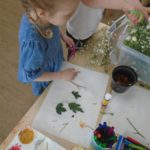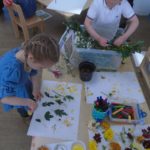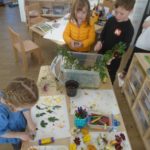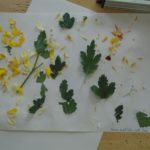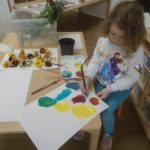This week we’d like to share our love of, and interest in, frogs and flowers with you 🙂 We have been keen to visit the pond this week as some of us remembered that there had been frogs there last Friday. Before we went to the pond on Tuesday Miss Sandison read us a short book about the lifecycle of a frog, what they like to eat and what likes to eat them! Learning about biodiversity at an early age helps us to become responsible citizens. This means we develop respect for nature and for other people and are more likely to participate in political, economic, social and cultural life as adults. During the week some of us have chosen to look at non fiction books about frogs and other amphibians.
Each time we walked to the pond and back we looked at flowers and insects and talked about what we could see and hear. Being aware of what we can see and hear around us is one of the ways we develop listening skills which we need to use for learning. We asked questions like “Whar did dis flooers grow fae?” and compared colours and shapes of petals and leaves, “dis leaves ir zigzag”, “yun een is no opened yet”, “dir is a fly on it”, “I hear a bee!”. We took turns at using the camera to take photos which is a good way to develop our skills in using technology.
Back in the setting we have explored and learned more about frogs through play at the water tray. Miss Sandison created “frogspawn” using water beads, flies and tadpoles too to enhance our play. There was a lot of discussion during out frog play and a lot of learning. “Froogs go in the water”, “I saw a green frog”, “tadpoles turns into froogs”, “They stick oot dir tongues lik dis”, “Oh yum I’m catched a flea!”, “The flies go in dir bellies”, “I had tadpoles, dey growed into froogs”, “Dey sook up flies. I sook up noodles”, “we need to weet wir hands afore we touch the frog”, “people hae lungs so dey can breathe. Frogs hae lungs”, “his tail is disappearing”, “dis tadpole is breathing under water”, “dis is whar the mam frog is sitting, up on d log”, “5 little speckled frogs…”, “Let’s collect lots of frogspawn”, “I’ll help fill dee jug with frogs eggs”, “They need water,”, “The eegs need to bide in the water to grow”, “my froog jumped right high up”, “ok my frog splashes in d pond when he sees dee,” “it’s squishy”….and so much more interesting play and discussion!
Exploring our interests together in this way is fundamental for our literacy and numeracy development and helps us to understand our world as we learn about where living things come from and how they grow and change through our play, we talk and co-operate with each other, share ideas and thoughts and explore quantity, pattern, number and amount in meaningful contexts.
Our interest in flowers has also been deeply explored this week. We used paint and rolls of wallpaper outside to create flower pictures and many other interesting designs. Rolling paint across large surfaces is a great way to develop our shoulder stability and wrist strength which helps us write in the future. There are many interesting sights and sounds outdoors which can inspire us to draw and paint in new and different ways too. Through this type of play we learn how to express our ideas, thoughts and feelings as well as discover new ways to create images. Real flowers have been a source of creative inspiration indoors too. Some of us practised our scissor skills by cutting parts of the flowers before using the parts on our pictures or to make decorative bouquets. Exploring the parts of the flowers in depth, through dissection and printing or painting develops our scientific understanding as well as our literacy and numeracy skills as we learn about the parts of flowers, use new words and vocabulary, count, compare and contrast.
We hope our blog post has put a spring in your step for the weekend and look forward to sharing more of our learning with you next week.

